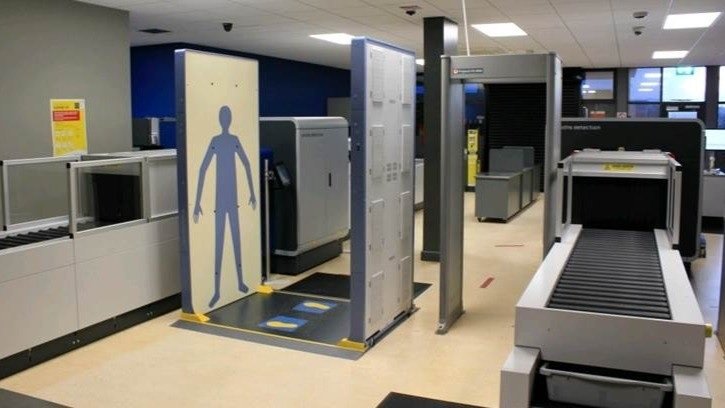Setting up CCTV cameras is one of the best ways to protect your property, but if they’re not positioned correctly, you could miss out on key footage when it matters most.
Many people invest in high-quality systems only to find out later that poor placement left blind spots or failed to capture incidents.
To get the most out of your security setup, it’s important to place cameras strategically. This ensures every area is properly monitored, and nothing slips through the cracks.
Let’s take a closer look at the best places to position CCTV cameras for maximum coverage.
Understand the Purpose of Each Camera
Before mounting anything, take a moment to plan what you want each camera to do. Are you watching an entry point?
Monitoring employee movement?
Keeping an eye on high-value assets?
Each camera should serve a clear purpose based on the layout of your property and your specific security concerns.
Walking through the space and identifying potential problem areas makes it easier to decide which angles will give you the most visibility and detail.
Entrances and Exits
One of the most important areas to monitor is where people come in and out. Entry and exit points should always have clear, front-facing camera views. This helps capture faces, delivery activity, and any unauthorized access attempts.
If possible, install the cameras at eye level or slightly above door frames. Avoid positioning them too high, or you’ll end up with hard-to-see footage. For extra protection, place cameras both outside and inside the entrance to catch different angles and improve clarity in varying lighting conditions.
Reception or Front Desk Areas
For businesses, the reception area is often the first point of contact. It’s also a place where visitors check in, ask questions, or wait for meetings. A camera here can help monitor interactions and keep a record of who’s coming and going throughout the day.
Make sure the camera is positioned in a way that covers the entire space without being obstructed by furniture or décor.
Hallways and Interior Corridors
Hallways may seem less important, but they connect your property’s major spaces and are often travelled by staff, clients, or intruders trying to move unnoticed. Placing cameras along these routes allows you to track movement and identify patterns of behaviour.
Wide-angle cameras are best for long hallways, as they can capture more space without needing several devices.
Stairwells and Elevators
Staircases and elevators are common access points, especially in multi-floor buildings. Unfortunately, they’re also frequently overlooked in camera setups. These areas should be covered from top to bottom to ensure no one bypasses the main entry points unnoticed.
For stairwells, place cameras on landings that can view both the floor below and above. For elevators, mount cameras either inside the cab or right outside each level to see who enters and exits.
Parking Lots and Building Perimeters
Outdoor spaces require special attention. Vehicle break-ins, vandalism, and loitering are all more likely to occur in less supervised areas. Position cameras to cover:
- Parking entrances
- Loading docks
- Rear exits
- Dumpster zones
- Fence lines
Storage and Inventory Rooms
If your business handles merchandise, tools, or equipment, your storage areas need full surveillance coverage. These are often the target of both external theft and internal issues. A camera aimed directly at shelving units, locked cabinets, and loading areas helps reduce inventory loss and keeps employees accountable.
Server Rooms or IT Equipment Areas
In commercial spaces, protecting digital data is just as important as physical security. Server rooms and data closets should be under constant watch. A camera here can discourage tampering, unauthorized maintenance, or other suspicious activity.
Inside Elevators and Near Emergency Exits
These may not seem like typical high-priority zones, but they can be exploited during emergencies. Emergency exits are sometimes used to bypass alarms, and elevators can become vulnerable when isolated. Having cameras in these spots gives you a better overview of activity during off-hours or unusual events.
Middle of the Plan: Choosing the Right Type of Equipment
It’s not only about where you set up your cameras, but also about picking the right kind of system. For businesses, this means choosing commercial security cameras, as commercial CCTV cameras do more than just basic monitoring and are made to fit business needs.
Adjust for Lighting and Weather Conditions
Bad lighting can ruin even the best footage. Make sure indoor cameras avoid facing bright windows or light sources directly. Use cameras with wide dynamic range (WDR) for better clarity in areas with contrasting light.
Outdoor cameras should have strong weatherproofing, UV resistance, and good infrared or night vision. Also, position them under eaves or shades when possible to protect from glare and water exposure.
Monitor Shared and Public Spaces
In businesses open to the public like shops, cafés, or service centers, it’s important to keep an eye on common areas. Cameras in these spots can help detect shoplifting, disputes, or loitering. Make sure they’re installed high enough to stay out of reach, but angled well enough to capture movement and facial details.
Minimize Blind Spots
Every camera has limits. Walk through your space and test each angle after installation. Identify any blind spots and see if they can be covered by adjusting existing cameras or adding one more device. Overlapping coverage from multiple angles improves your chances of capturing important details.
Final Thoughts
Getting the most out of your CCTV system is all about thoughtful placement. You don’t just want footage, you want useful footage that can prevent, detect, or resolve incidents with clarity and ease. By placing cameras in the right spots, covering key areas, and choosing equipment made for commercial needs, you build a system that truly works for your property.










